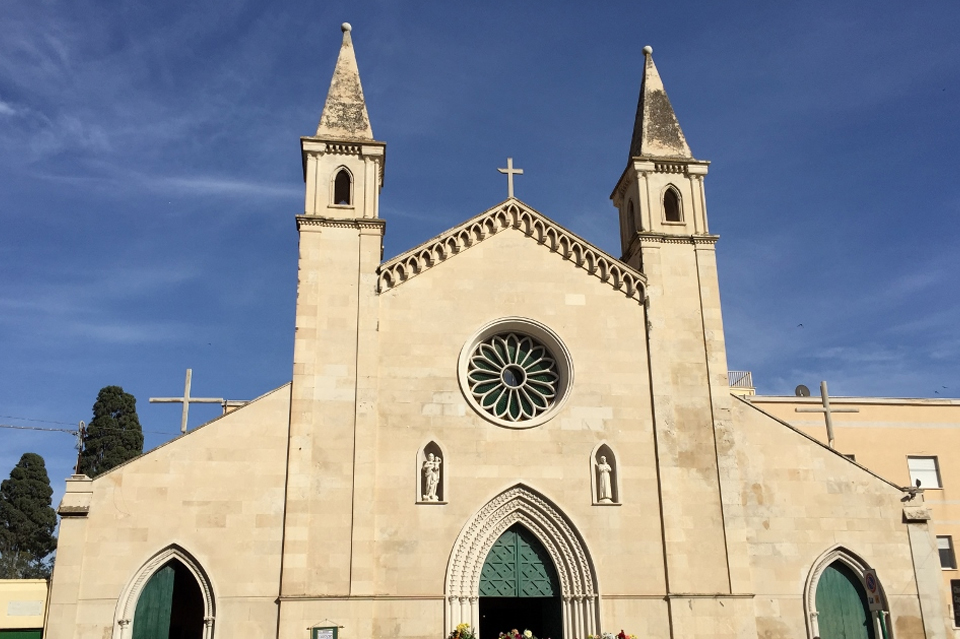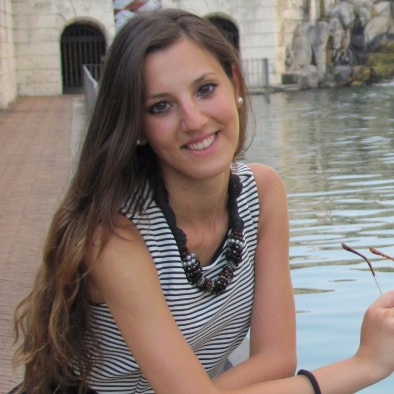
Church of the Capuchins
Church consecrated to Our Lady of Graces “a Maronna ‘e razi” (feast celebrated on 2 July).
It stands on the ancient monastery of the fathers who moved there in 1481 and when it fell into disrepair it was transferred to the Capuchin Fathers in 1572.
The façade of the church is covered with slabs of stone from Comiso. It features three entrances.
The largest central one has portals in neo-Gothic style and columns splaying out, a rose window and two towers with spires. At the sides of the main entrance, there are two niches with simulacra of Our Lady of Graces and St. Francis of Assisi. On the south-west side, until 1895, there was a tower built by the Capuchins in 1585 to defend themselves from raids. Afterwards it became a bell tower. Now the bell-gable is located on the terrace of the monastery with a single bell, with decorations and a writing on it.
From 1730 to 1733 works were carried out below the church to obtain a crypt for the burial of the Capuchin Fathers.
In 1867, with the confiscation of religious property, the monastery of the Capuchin Fathers, which became the property of the Municipality of Terranova di Sicilia, was converted into a town hospital, a shelter for the foundling with accommodation for nurses and an agricultural school.
The two side naves were built next to the pre-existing central one between 1935 and 1962.
The façade of the church made by the architect A. Borra was rebuilt in 1944. The project involved the addition of two towers with spires.
In 1960 the former monastery was demolished and another one was built, which has been home to the theology school since 1995. There are 7 windows on each side of the naves, decorated with the 14 stages of the Via Crucis.
Once you enter the church you will notice a poorly lit setting, since light shines through the opaque glass of the windows decorated with multicolored images.
In the left-hand nave you can see the statues of St. Anthony of Padua (made of plaster) and St. Francis of Assisi (made of solid wood – Naples 1772). Then there is the altar of the Virgin of the Sick with the 18th-century painting of the same name that comes from the church of the Capuchins of Agira (province of Enna) and a bas-relief of the Marian emblem. Finally, a baptismal font.
In the right-hand nave, there are two confessionals made by the Costa brothers from Palazzolo Acreide. In the transept, there is a wooden Crucifix of fine workmanship.
In the central nave, which leads to the side naves through three arches and two mullioned windows, there are the choir, the wooden roof trusses and 4 windows depicting Saint Conrad, Saint Lawrence, Saint Francis and Saint Joseph.
On the opposite side we can see Saint Anthony, Saint Bonaventure, Our Lady of Graces and Jesus.
The most important part of the church, artistically speaking, is certainly the high altar. Here is a polyptych made up of five paintings with inlaid wooden frames and an original case of the Most Holy. The paintings on the sides show Saint Apollonia, Saint Venantius, Saint Cecilia and Saint Vitus and were made by an artist from Terranova, Calogero Avvocato, in 1720. The central one is the work of Filippo Paladino, depicting Saint Mary of the Angels. At the bottom of the painting there is a niche that houses the simulacrum of Our Lady of Graces, a wooden statue made by the Capuchin Battaglia in 1813.
The case of the Most Holy is in dark wood with two shelves and was built by Friars Girolamo and Vincenzo from Malta in 1691.
Near the altar is a plaque depicting the plague that occurred in Terranova di Sicilia in 1816.
Leaving the church, you arrive at the back where the sacristy and the parish offices are located. In the monastery, in addition to the dormitories of the Capuchins, there are two large rooms used as a library and a theater.
The feast of Our Lady of Graces, which occurs on 2 July, is one of the most beautiful and significant in Gela and a very large number of faithful attend it. Among them there are many devotees who participate barefoot in the procession, carrying in their hands a portrait of Our Lady and a large long candle (candelora) wreathed in flowers.

